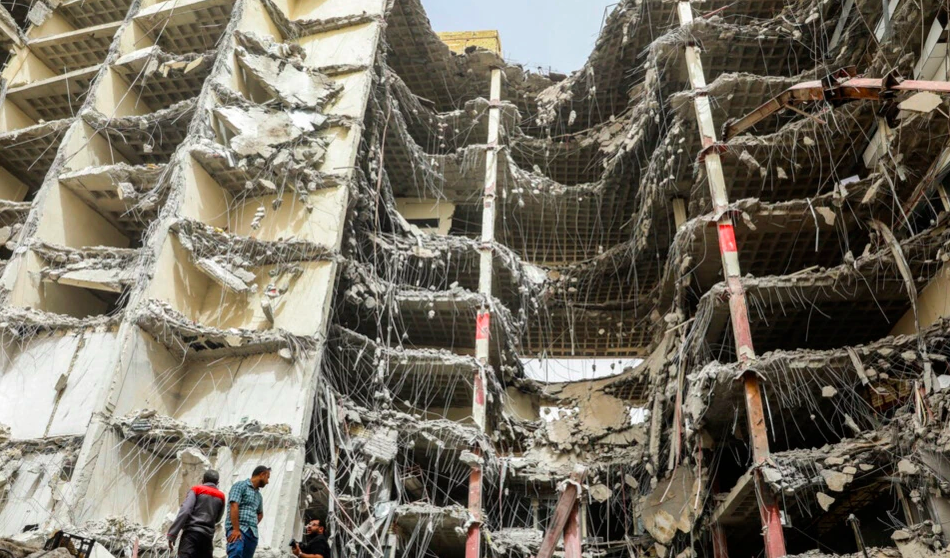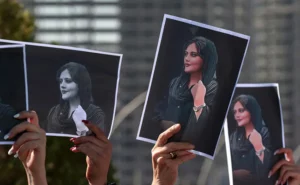The death toll has reached at least 31 people after a high-rise building collapsed in Iran’s southwestern city of Abadan on May 23. Recalling the horrific 2017 fire and ensuing collapse of Tehran’s iconic Plasco building which had a reported death toll of at least 30 people, issues over government corruption and appalling negligence have sparked ongoing protests in Abadan. While much of the protests have called for accountability for those responsible for the building collapse and the need to address corrupt officials, they also reveal deeper frustrations of an Iranian populace that has suffered under economic devastation, as well as social and political repression.
Economic anxiety on poor and working-class Iranians has worsened under the pressure of sanctions and the impact on energy and food prices as a result of the ongoing war in Ukraine. However, the wealth inequality that Iranians themselves witness and describe further highlights the corruption of government officials. Making matters worse, Iranian security forces fired shots and used tear gas against protestors who took to the streets to rightfully express their long-held grievances and are fed up with the hardships they face.
According to the Center for Human Rights in Iran, authorities went as far as imposing martial law in order “prevent people from continuing protests” which have continued for many days, and have arrested people at funeral ceremonies for the victims of the building collapse. Though Iranian authorities promised to go after those responsible and arrested Abadan’s Mayor Hossein Hamidpour and several others, such promises have been made before as Iranian authorities have acknowledged the issue of corruption throughout the state.
Despite recognizing the egregious misconduct of officials, Iranian authorities have repeatedly failed to address this deep-seated issue by focusing on scapegoating individuals rather than the endemic nature of the problem. In the case of building safety and codes, there are many buildings in “critical condition” and thousands of buildings considered “unsafe” in the capital. As long as Iranian lives and livelihoods are not prioritized by Iranian authorities, such protests—which we have seen across the country and under varying circumstances in recent years—will continue. The answer is not to suppress the chants and protests of innocent Iranians, but instead, to address their grievances, allow them their rightful space to assemble, and end the cycle of compounding injustices.
Back to top

